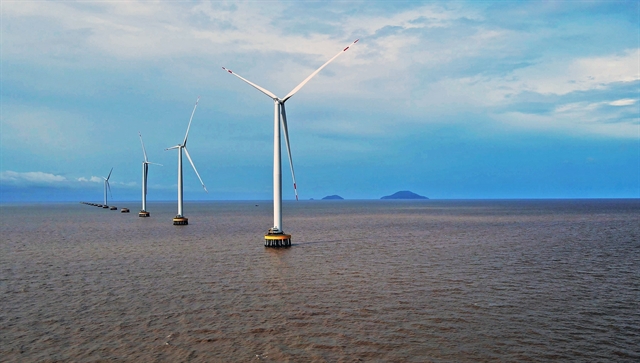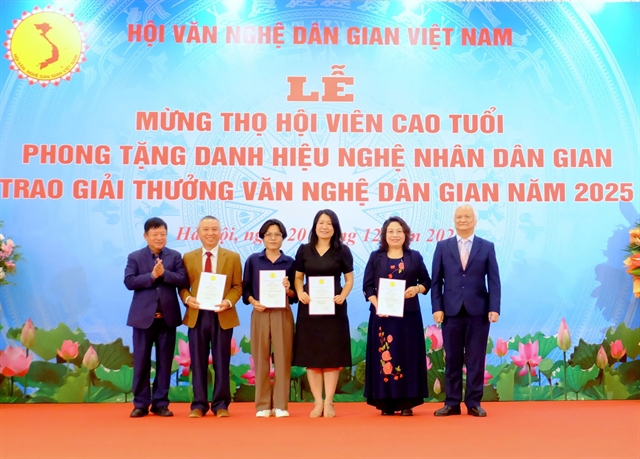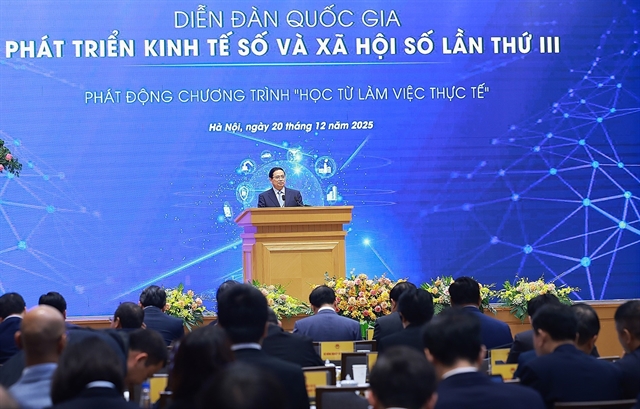 Society
Society
.jpg)
 |
| Cà Mau Province has 14 wind power projects with a combined capacity of 694.2 MW in commercial operation. – VNA/VNS Photo Huỳnh Anh |
CÀ MAU – Cà Mau Province is accelerating clean energy development as part of efforts to balance economic growth with environmental protection.
With three sides facing the sea, a coastline of more than 300 kilometres, stable wind speeds and long hours of sunshine, the southernmost province has favourable conditions for developing clean energy, particularly wind power, contributing to national energy security.
In line with global energy transition goals and Việt Nam’s pledge to achieve net-zero emissions by 2050, the province is stepping up renewable energy development.
Nguyễn Chí Thiện, director of its Department of Industry and Trade, said: “Wind power is identified as one of the province’s industrial energy strengths.”
The province’s offshore wind speeds average 6.3–7 metres per second at heights of 80–100 metres, offering excellent conditions for wind power, he said.
Following the merger of the former Cà Mau and Bạc Liêu provinces on July 1, the new Cà Mau now has 59 wind power projects.
Of these, 14 with a total capacity of 694.2 MW are already in commercial operation, while the remaining are under construction, have received investment approval and are completing procedures, or are slated for development between 2025 and 2035.
Wind power in the province is not only an energy source but also a tourism product.
Two wind farm tourism sites are already operating, attracting visitors, and the province plans to develop further tourism destinations in wind power areas.
Lâm Văn Bi, deputy chairman of the province People’s Committee, said: “After the merger, the province enjoys outstanding advantages over other provinces in the Mekong Delta in aquaculture, seafood processing, exports, and renewable energy.
“The province is following a strategic path that promotes economic growth, safeguards the environment and secures livelihoods for local communities.”
The province aims not only to supply clean electricity domestically but also to export it.
The People’s Committee is drafting an electricity export plan under the Prime Minister’s Decision 48/QĐ-TTg (2023) and Decision 53/QĐ-TTg (2024).
According to the national Adjusted Power Development Plan VIII, the province’s technical wind power potential could exceed 16,000 MW, including 2,000–5,000 MW that could be used for export.
The Government has tasked the Ministry of Industry and Trade with studying and proposing offshore electricity exports from Cà Mau’s waters, along with a pilot scheme for offshore wind power development, for submission to competent authorities.
With its vast potential for diverse energy development, the province is advancing projects in solar, biomass, waste-to-energy, thermal, and liquefied natural gas.
These include the expansion of Cà Mau 1 and 2 thermal power plants with a capacity of 1,500 MW, Ngọc Hiển solar farm (50 MW), Khánh An biomass plant (4 MW), and Năm Căn waste-to-energy plant (6 MW).
More than 2,800 rooftop solar systems with a total capacity of nearly 300 MWp have also been installed across the province.
The province has identified hydrogen produced from wind and solar power as a promising clean energy source, and several investors have expressed interest in researching and developing such projects.
Hydrogen production projects with a total capacity of around 86,248 tonnes per year were listed in the former Cà Mau Province’s energy development plan.
In the former Bạc Liêu Province, an investor had also proposed a similar project with a capacity of around 24,000 tonnes a year.
Thiện said the Department of Industry and Trade would review and advise the People’s Committee on adjustments to the province’s electricity supply infrastructure plan.
The adjustments involve updating power generation and grid projects approved under the national Adjusted Power Development Plan VIII, while aligning them with land use, construction, regional, and technical plans to ensure conditions for implementation, he said.
The province continues to monitor and support stable operations at wind farms while ensuring effective implementation of planned projects, he said.
It is prioritising investment in sustainable energy infrastructure, mobilising social resources for energy projects and pledging maximum support for investors, especially in land clearance and installing 500 kV, 220 kV, and 110 kV transmission grid projects.
The grids are compatible with wind, solar and gas power plants to ensure their full capacity can be utilised. – VNS
.jpg)



